Review Article 
 Creative Commons, CC-BY
Creative Commons, CC-BY
Description Of a Case of Treatment of A III Degree Burn With SR-19 Ointment
*Corresponding author: Sergey Roslyak, Freelance researcher, associate professor at the Ukrainian State University of Food Technologies, Kyiv, Ukraine.
Received: June 17, 2024; Published: June 20, 2024
DOI: 10.34297/AJBSR.2024.23.003032
Abstract
According to the WHO, approximately 6 million of people Burns are the 4th most common type of injury in the world. Mortality caused by burn injury per 1,000 population in the United States ranges from 3.9 to 4.5, in Europe this indicator ranges from 2.8 to 35.4, in Northeast Asia-184, respectively [1]. Approximately one third of burn injuries are caused by thermal damage. The main cause of mortality is infectious complications-from 50 to 80% of patients [2]. To protect the wound from the penetration of infection, special wound-healing agents are used, the effectiveness of which is constantly decreasing. Medicine tries to continue the fight against disease-causing microorganisms by further searching for and using new drugs. But at the same time, new mutant microbes are appearing that are able to resist new drugs. The search for new antibiotics does not stop, although it is accompanied by huge material and other costs. A practical way out under the conditions of the antibiotic therapy crisis was the recognition by scientists of the importance of alternative methods of fighting infections [3], primarily the use of natural antibiotics [4]. A special place among these products in terms of its effectiveness is occupied by propolis-a brown sticky substance with which bees cover the cracks in the hives. Its most important properties: stimulation of immunobiological processes in the body, suppression of reproduction and destruction of viruses, many microorganisms, including tuberculosis and fungi. The next super effective biological stimulator is royal jelly-a special food that bees use to feed the larvae of the queen and which the queen bee eats throughout her life. Bee royal jelly has an immunomodulatory and antitumor effect, increases the body’s resistance to viral and bacterial infections.
Keywords: Thermal infected burn, Necrosis of the epidermis, Royal jelly, Propolis, Wax bandage
Presentation of the case The use of SR-19 ointment together with bandages with wax and gauze in the treatment of burns turned out to be successful. An example can be the treatment of a victim (41 years old) from a boil. After receiving a burn in the area of the ankle joint, the victim was taken 1 hour later to an inpatient medical facility, where he was provided with emergency medical care to relieve the acute condition (clinical diagnosis: thermal infected burn of the right foot (S-1% of the body) with partial necrosis of the burn epidermis III degree,). In the future, the patient underwent systemic drug therapy to reduce pain, intoxication of the body, treatment and prevention of complications. The wound was infected, the patient underwent a full course of antibiotic therapy. On the 14th day, there was a high temperature, significant swelling, constant severe pain, heavy intermittent sleep, depression. Wounded the process was in the inflammation phase (Figures 1,2).
After the first day of treatment with SR-19 ointment, the body temperature normalized, the swelling decreased, the pain went away, and for the first time the patient fell asleep without sleeping pills. On the fourth day, wounded the process reliably entered the regeneration phase (Figures 3,4).
Ointment SR-19 on a bandage with wax from the plaster was applied daily: the first and second day-4 times with an interval of 2 hours, the third and fourth day-3 times with the same interval. The phase of the wound process of epithelization and reorganization of the scar came on the eighth-ninth day (Figures 5,6).
From the fifth to the tenth day, the ointment was applied twice a day. The used bandages maintain a moist environment, which accelerates the healing of damaged tissues. They also contribute to the dissolution and removal of dead tissues (Figures 7,8).
They have good biocompatibility with human skin. They do not stick to the wound and are removed without pain, which is very important for a comfortable dressing change.
Results
The use of SR-19 ointment on bandages with wax from the zaburus allows you to quickly and painlessly treat the wound. The wide range of antimicrobial activity of these agents ensures the neutralization of all microorganisms-viruses, bacteria, fungi and spores. SR-19 ointment components are highly effective natural antibiotics, biogenic stimulants. A wound covered with a wax bandage with SR-19 ointment is protected from secondary infection, which is why the first phase of the wound process is faster and uncomplicated. The injury was not accompanied by complications either immediately after the injury or in the long term. The actual duration of the phases of wound healing is many times shorter than the generally accepted ones. The dressing process was almost painless. The use of the developed SR-21 suspension provided an effective addition to the main treatment, enhanced the therapeutic effect of the main drugs, increased the immune status and resistance of the body. The positive results of using the developed preparations based on native royal jelly and propolis are an attractive concept for the development of new pharmaceutical products in the treatment and prevention of recurrent ulcers [5], open traumatic wounds of soft tissues [6], open fractures with the presence of soft tissue defects tissues; wounds developed after surgical treatment, abscesses, postoperative wound purulent complications. The duration of treatment of patients is reduced many times, the painlessness of bandaging procedures is ensured, and the number of amputations is reduced. Although this study has many strengths (high efficacy, low drug cost, availability, possibility of parallel use of pharmaceuticals, lack of complications), there are limitations. First of all, the insufficient amount of clinical research should be attributed to them.
Funding
This study was fully funded by the author.
Acknowledgment
Thanks to my wife Svitlana for her patience, beekeeper Volodymyr Malikhin for technical advice on bee royal jelly, doctor Serhii Dakhnov and doctor Iryna Roslyak for critical reading, beekeeper Igor Bykh for help in working with bees, and all volunteers for their trust (I hope I met their expectations).
Conflict of Interest
None.
Acknowledgments
None.
References
- (2002) Global Burden of Disease in data sources, methods and results.
- Satosova NV (2012) Epidemiology and prevention of bloodstream infections in the burn resuscitation and intensive care unit. thesis abstract. S.Pb. 25.
- Sergey Roslyak (2023) Progress in Overcoming the Problem of Antibiotic Therapy. AJBSR 18(2): 163-165.
- Sergey Roslyak (2023) Priorities in the Field of Overcoming the Crisis of Antibiotic Therapy. AJHSR 1(1): 1-4.
- Sergey Roslyak (2023) Prospects for the Creation of Drugs (Experience in the Treatment and Prevention of Recurrent Ulcers on the Background of Diabetes Mellitus) JPCR 9(2): 1-3.
- Sergey Roslyak (2024) Description of a case of treatment of a combined wound with partial scalping with SR-19 ointment. AJBSR 22(1): 128-136.

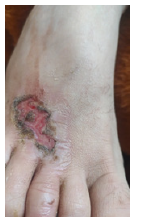
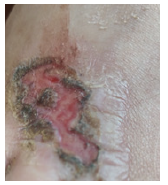

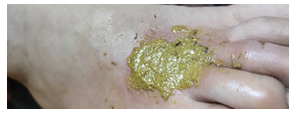
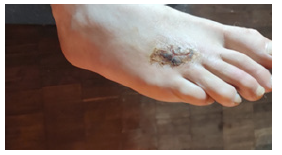
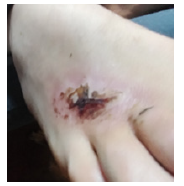
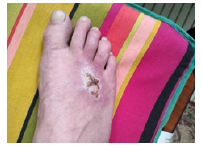



 We use cookies to ensure you get the best experience on our website.
We use cookies to ensure you get the best experience on our website.